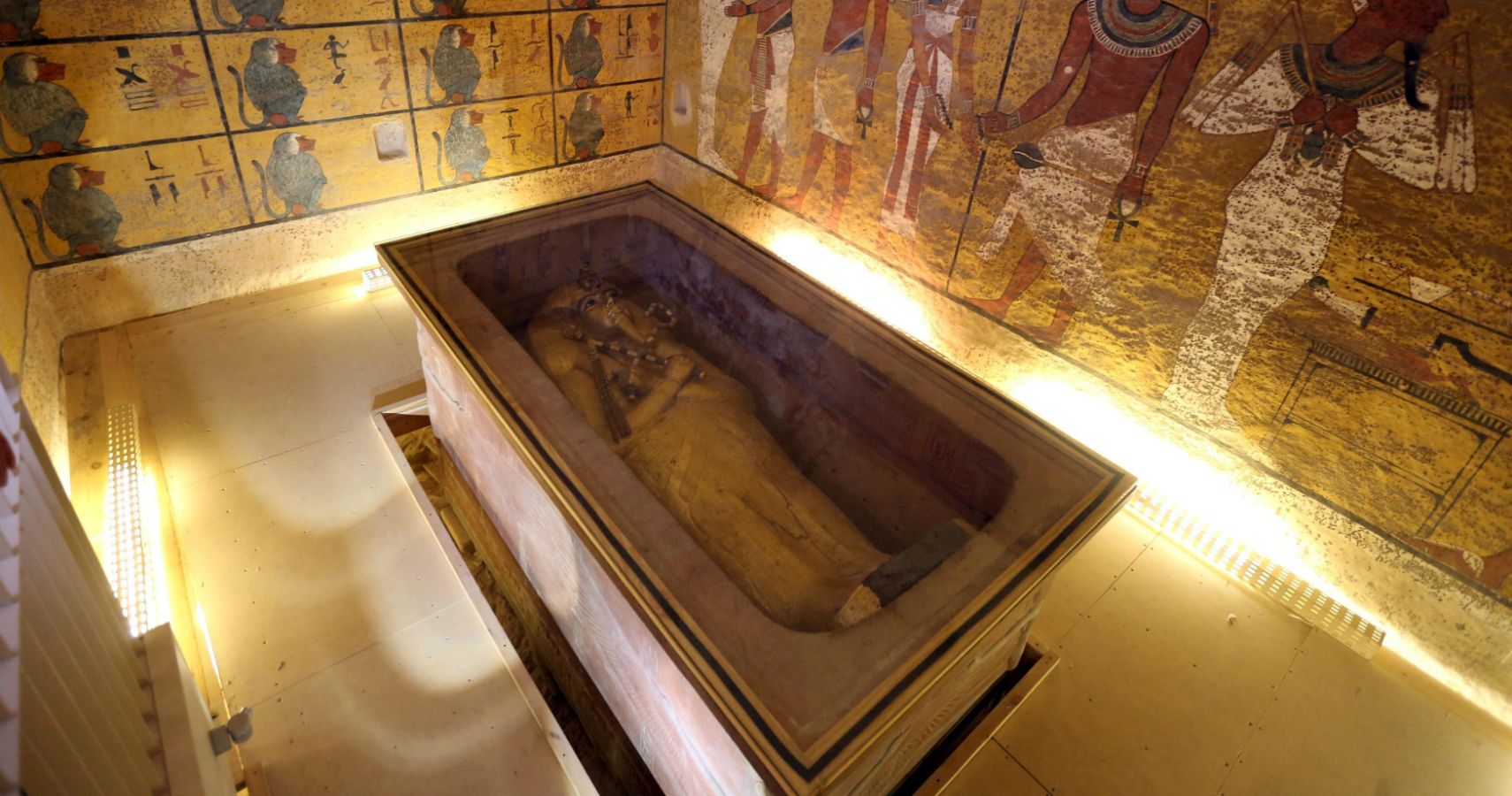The latest in a series of radar scans has determined that there are no secret chambers or hidden passages behind the walls of Tutankhamun’s tomb, as had been suggested. A previous scan in 2015 had indicated the presence of empty chambers, doorways, and even objects inside rooms.
The results mark a bitterly disappointing end to a three-year investigation into the possibility of undiscovered chambers, which many Egyptologists and history buffs had hoped would lead to the discovery of the lost tomb of Nefertiti.
Historians have long suspected that Tutankhamun died suddenly, and that his burial arrangements were rushed as a result. This is suggested by a wealth of evidence, such as the fact that his sarcophagus appears to have been made for someone else, his tomb is smaller and less elaborate than most, and it seems to have been sealed before the paint on the walls had dried.
It has long been theorized that, due to the unexpected nature of his death, Tutankhamun was buried in what was originally the tomb of his stepmother, Nefertiti. This theory posits that most of Nefertiti’s tomb was sealed off with plaster, so that Tutankhamun could be placed in one of the outer chambers.
The world was abuzz with excitement in 2016, when this appeared to be confirmed by Ground Penetrating Radar (GPR), which uses electromagnetic pulses to create images of the subsurface. But when a second scan conducted by another team produced conflicting evidence, a third and final scan using high, medium, and low frequencies was ordered.
This scan was conducted in February 2018, with two separate teams interpreting the results independently, before confirming them together. Sadly, they concluded that there are no hidden chambers, and that the results of the first scan may have been compromised by the painted walls or the quartzite sarcophagus, which could be conducting electricity or sending out rogue signals.
Franco Porcelli, who worked on the third scan, says that while the results are disappointing, he hopes that this case study will help convince the Egyptology community of the merits of GPR technology, as it has been met with great skepticism in those circles. He says that GPR “may be more efficient than traditional archaeology and less destructive”.
The Egyptian government is notoriously reluctant to allow researchers into their ancient historical sites. Hopefully, the fact that they allowed GPR to be used in one of their most-precious sites is a sign of change, and we will see more investigations like this in the near future.


